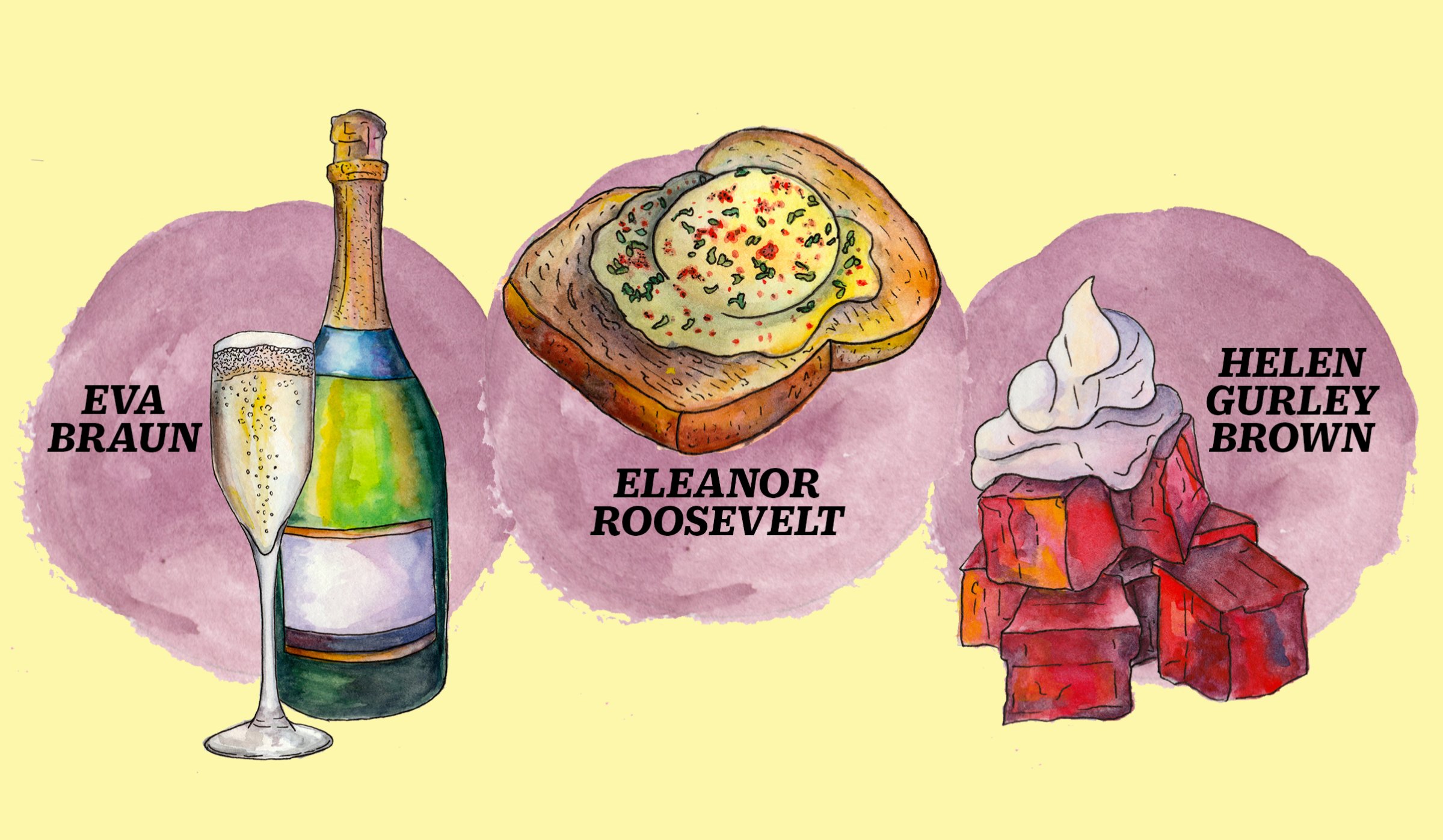
If you are what you eat, Eleanor Roosevelt was leftovers on toast. Culinary historian Laura Shapiro has memorialized one of the world’s most celebrated cooks in Julia Child: A Life and dissected American food culture in two other works. In her latest, What She Ate: Six Remarkable Women & the Food That Tells Their Stories, she studies the eating habits and hang-ups of significant figures. Probing biographies, archives and her subjects’ own writing, Shapiro argues that food and diet open revealing windows into character. “While extraordinary circumstances produce extraordinary women,” she writes, “food makes them recognizable.”
ELEANOR ROOSEVELT
The cuisine in the Roosevelt White House was widely known as “the worst in the history of the presidency.” A Depression-era mentality certainly contributed–Henrietta Nesbitt, the cook (the “most reviled” ever to serve) dreamed up a low-cost lunch standby: leftovers, whether kidneys, curried eggs or shrimp and peas, on toast. The First Lady herself had little skill or interest in the kitchen–the one dish she prepared with confidence, again and again throughout her marriage, was scrambled eggs, beaten and cooked in a chafing dish at the supper table. “It was the only version of homemaking she felt she was good at,” Shapiro writes. “Everybody liked the eggs and the convivial atmosphere, and nobody questioned the casting.”
EVA BRAUN
The first words Braun spoke to Adolf Hitler were “Guten Appetit,” uttered over a Bavarian sausage and beer she placed before him as a photographer’s assistant. She was 17, he 40, and their affair began shortly thereafter. Hitler hid their relationship from the public through their 1945 suicides, which occurred the day after they married. But within the walls of the Berghof, a zone untouched by wartime famine, Braun cherished her position in the seat to his left at lunch. Meals like sauerbraten (a pot-roast dish), dumplings and spaghetti were often shared among officials and guests (Hitler, a sweet-toothed vegetarian, was served from a separate tray)–but aside from a thirst for sparkling wine, Braun consumed very little. “She found his dietary regimen disgusting and said so,” Shapiro notes. Secretary Traudl Junge described Braun as “very proud of being slim and dainty.”
HELEN GURLEY BROWN
In Sex and the Single Girl and as editor of Cosmopolitan, Brown never shied away from sharing the details of her life. But when it came to food, she could never quite make up her mind. At times she declared herself to be an expert cook–at others, a novice. She celebrated eating and then decried the guilt that followed. In truth, Brown was a career dieter. Her favorite nighttime sustenance: a box of sugar-free Jell-O, mixed into rubber with just a bit of water and finished with a dollop of light yogurt. “Food and comfort, food and safety, food and emotional support–it’s the oldest relationship there is,” Shapiro writes. “When she came back to her favorite Jell-O night after night, she was tasting perfect calm and sweet security.”
More Must-Reads from TIME
- Cybersecurity Experts Are Sounding the Alarm on DOGE
- Meet the 2025 Women of the Year
- The Harsh Truth About Disability Inclusion
- Why Do More Young Adults Have Cancer?
- Colman Domingo Leads With Radical Love
- How to Get Better at Doing Things Alone
- Michelle Zauner Stares Down the Darkness
Write to Lucy Feldman at lucy.feldman@time.com